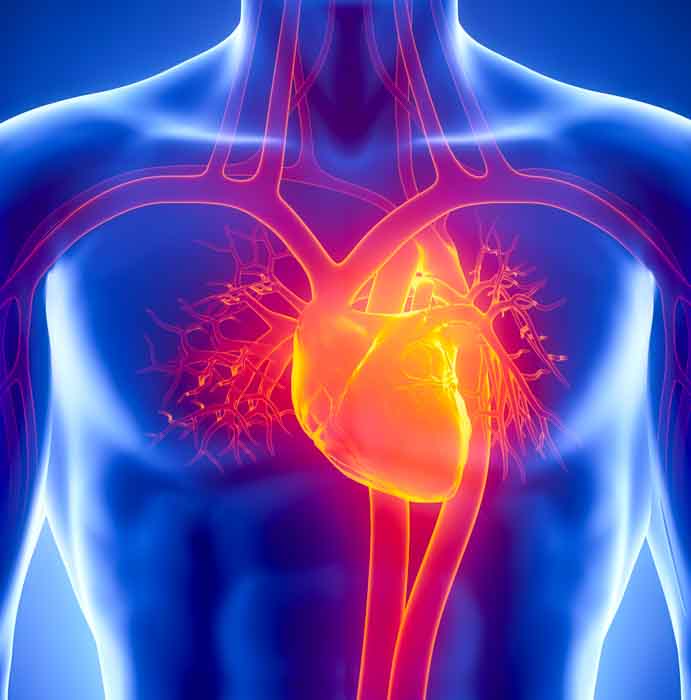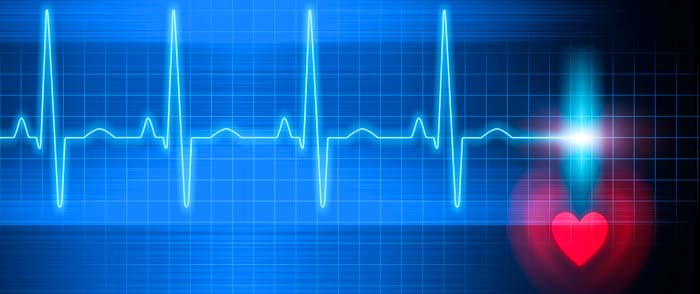Acupuncture reduces the frequency and intensity of angina, facilitates decreases in medication dosage levels, and prevents resistance to drug therapy efficaciousness.
A team of eight researchers conclude that acupuncture is safe and effective for the treatment of stable angina. Wading through the sea of medical research is challenging for anyone. It is understandable that effective traditional health practices may be overlooked for the treatment of common ailments. Here, investigators took up the challenge of determining acupuncture’s outcome measures and found a significant total effective rate.

Angina is chest pain that results from diminished blood flow to the heart. Stable angina is a type of chest pain or discomfort that usually occurs upon exertion or due to stress. New patients with angina are diagnosed every year. For these people, their way of life changes—often working to avoid alarming squeezing pains in the upper body with lifestyle modifications. The occurrence rate varies worldwide. In China, for example, the occurrence rate of angina has increased annually, and the age of onset has become younger, according to the authors of the meta-analysis. The prognosis varies, but risks for people diagnosed with angina pectoris include myocardial infarction or sudden death.
Acupuncture has been practiced in China and other Asian countries for over 2,000 years. Today, it has been adopted in other areas of the world. In fact, the National Institutes of Health (NIH) recommends acupuncture as “an alternative and complementary treatment for many health conditions.” However, ancient practices that aid in relieving pains and symptoms of current diseases are often overlooked. Modern research helps to establish a reference such that doctors and patients may consider treatment options including acupuncture and herbal medicine based on outcome measures.
The reviewed studies were extracted from the same databases used by both patients and doctors: PubMed, Medline, Wanfang, and China National Knowledge Infrastructure. Over 200 articles were found regarding angina pectoris and acupuncture. Strict inclusion criteria brought the total number of studies for review down to eight. Within the eight selected studies, there was a sample size of 640 people diagnosed with stable angina pectoris that used acupuncture as a treatment modality or were in control groups.
A total of 372 people received acupuncture therapy, as infrequently as once per week. Those who did not receive acupuncture therapy were treated only with conventional drugs. This was the control group, which consisted of 268 people. All studies were conducted in China. The reviewed articles ranged in publication dates from 2000 to 2014.
The treatments lasted between 10 days to 6 weeks and all had at least a 10 day review period. The final research paper produced by the team is entitled Meta-analysis of acupuncture therapy for the treatment of stable angina pectoris. Findings were compiled by Ze Zhang, Min Chen, Li Zhang, Zhe Zhang, Wensheng Wu, Jun Liu, Jun Yan, and Guanlin Yang.
The meta-analysis demonstrates that acupuncture is safe and effective for the treatment of stable angina. The findings reveal that scientists have reviewed the relationship between acupuncture and coronary related pain relief for years. After examining the existing studies meeting the inclusion criteria, Zhang et al. stated that “we found that patients treated with acupuncture therapy statistically increased the curative effects and reduced angina symptoms than that in patients with conventional drugs.”

Conventional drugs, while helpful, often have unpleasant adverse effects. Many angina pectoris patients reported headaches when taking nitrates for the treatment of chest pain. Discomfort and other adverse effects limit the applicability of pharmaceuticals. Of the articles reviewed, none showed any adverse effects due to acupuncture therapy. The researchers note that acupuncture often helps to decrease the required frequency and dosage of conventional drugs needed for pain relief. In addition, acupuncture slows the buildup of resistance to pharmaceutical drug efficaciousness. Zhang et al. note they “found that patients with acupuncture therapy significantly increase the clinical curative effects of angina relief, improved the electrocardiography, and reduced the nitroglycerin consumption that that with conventional drugs.”
One study included in the meta-analysis finds acupuncture combined with standard drug therapy produces an 88.% total effective rate. Using only drug therapy had fewer positive patient outcomes with a 60% total effective rate. Objective measures of improvement documented in electrocardiography find acupuncture a valuable adjunct modality to medications. Electrocardiography reveals a 62.9% improvement rate for patients receiving acupuncture plus drugs and only a 31.4% improvement rate for patients receiving only drug therapy.
Zhang et al. state, “at least 3 million adults and children use acupuncture every year in the United States.” They add that further investigations are recommended to confirm their findings demonstrating that acupuncture is safe and effective for the treatment of angina. Based on the data, Zhang et al. conclude that acupuncture provides valuable relief for patients with stable angina.
Reference:
Ze Zhang, Min Chen, Li Zhang, Zhe Zhang, Wensheng Wu, Jun Liu, Jun Yan, and Guanlin Yang (2015) Meta-analysis of acupuncture therapy for the treatment of stable angina pectoris Affiliated hospital of Liaoning University of Traditional Chinese Medicine, Shenyang, China and Liaoning University of Traditional Chinese Medicine, Shenyang, China.


